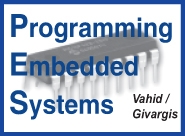MQTT Project Details
Everyone in EEL 4730
RVC and U01 is required to complete the MQTT Project 4
Modules. Submission details are included in the
instructions for each module, linked below:
Order Parts on Amazon Prime
NOW: These examples or similar -
NodeMCU
ESP8266 development board
DHT22
Temperature and Humidity sensor with connecting wires
This project uses Losant.com Broker
because of free registration and straight forward
credentials plus their tutorial materials. Many thanks and
credit to Losant for their offerings. You should
incorporate something similar in your Senior Design or
professional projects after graduation.
Example Senior Design MQTT project - Solutionaire
- IoT Air Quality Monitor
Special acknowledgement for the work of Michael Rodridguez
contributing guidelines for project instructions.
MQTT Introduction and Tutorial Part One Post
office example
How
MQTT Works video - 9 minutes
Losant
Beginners Guide To The MQTT Protocol - Details and
reference definitions
This project uses WIFI, but cannot connect
through FIU Secure WIFI. The NodeMCU code is not suitable
for WPA2 Enterprise. Use your router at home or a hot spot
through your cell phone.
Modules:
The project has four weeks of Modules. The
schedule and score percentages are in the Syllabus. The
submission scores count toward the final grade in this
course. Assignment are submitted through the form on the
class web site which has drop down list options for the
Modules.
ML1:
MQTT Lesson One - ArduinoIDE
ML2:
MQTT Lesson Two -Virtual
-
Download the .ino code for the Module
Sketch
-
Register as a user with Losant
-
Create a Device
-
Set the Device Attributes
-
Download the credentials
-
Insert credentials in code to enable log
in
-
Compile and upload code to the NodeMCU
-
Run the code on the NodeMCU - Serial
Monitor for internet connection and log
-
Push the NodeMCU button and watch the
Losant Device Log for event
-
Create the Workflow with Virtual Button -
press and toggle the NodeMCU LED
ML3:
MQTT Lesson Three - DHT22
-
Connect the DHT22 to the NodeMCU
-
Download .ino code for the Module Sketch
-
Compile and upload code to the NodeMCU
-
Print Temperature and Humidity locally on
the Serial Monitor
ML4:
MQTT Lesson Four - Dashboard
-
Losant - create another new device for
temp/humidity
-
set Device Attributes for temp &
humidity
-
Download credentials
-
Download .ino code for Module Sketch
-
Insert credentials into code to enable
log in
-
Compile and upload code to the NodeMCU
-
Run the code on the NodeMCU - Serial
Monitor for internet connection and log
-
Confirm communication from Device log
-
Create a Dashboard
-
Add Guage and Trend Plot components to
show Temperature and Humidity
-
Get URL to share the Dashboard and leave
connected for assignment submission
|
